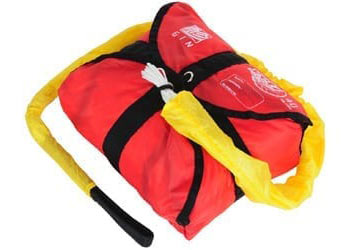
Reserve Parachutes
Cheap Insurance
Reserve parachutes are an absolute must-have in paramotoring - that is completely non-negotiable on our team. They're simple, effective, and if you ever think you need one, you'll be happy to have it. For us, choosing the right reserve is as important as having the right glider or paramotor, and beyond that the size of the reserve is especially important.
We know that when descending under a reserve, fabric is your friend. Try not to get too hung up about weight ranges and weight of the reserve, as the most important numbers are area (meters squared) and sink rate (meters per second or m/s). A certified reserve is required to sink no more than 5.5m/s. That's really fast, you'll hit really hard, but you'll survive. We really prefer the reserves that are bigger, thoughtfully designed, and set you down a bit softer so you can walk away with an exciting story to tell rather than a broken ankle.
Best of the best
We've narrowed it down to four of our favorite reserves from Gin, Niviuk, and High Adventure. These manufacturers don't tend to push their certifications to the max sink rate in order to deliver a lighter, smaller reserve; but rather depend on high tech fabric to keep bulk/weight down, and advanced shapes/bigger surface areas to keep sink rates low.
We've further presented in ascending order of "good, better, best" which translates to better technology and lower sink rates, but all of the reserves on this page are excellent choices and each one fits a specific person.
Safety Discount
Don't get too frazzled looking at the data, give us a call and tell us your specs, we'll happily point you in the right direction as to what reserve will give you the best chance for a soft landing should you ever need it. We also think that when it comes to safety, dollars should not be in the equation. Anyone attending our courses or purchasing a package from us receives a substantial safety discount on the right reserve, as we want to encourage you to fly with the right equipment.
Here are our recommendations:
Really Good Reserve Parachute:
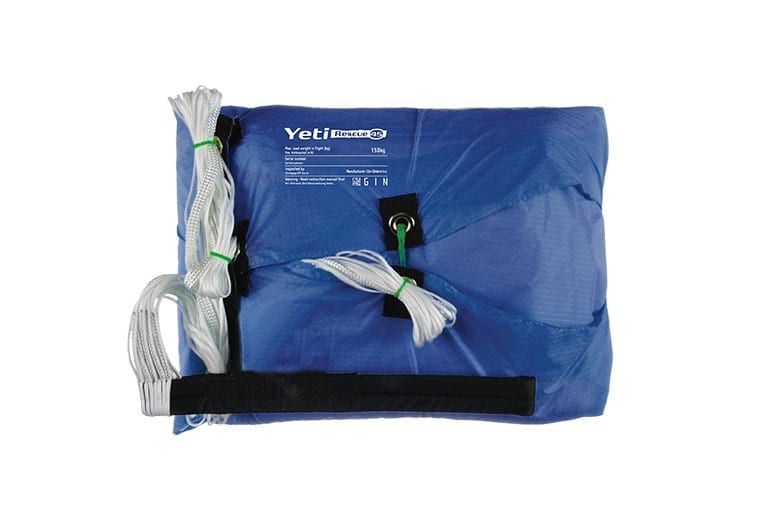

Gin Yeti Rescue
The gold standard - the Yeti from Gin has been one of our go-to reserves since 2012. Using higher technology fabric, the Gin Yeti is ultra-light and compact, yet offers 30-40% increased surface area over other lightweight reserves from competitors, and thus a lower sink rate.
Simple to operate, simple to repack, this is the king of the standard round reserves.
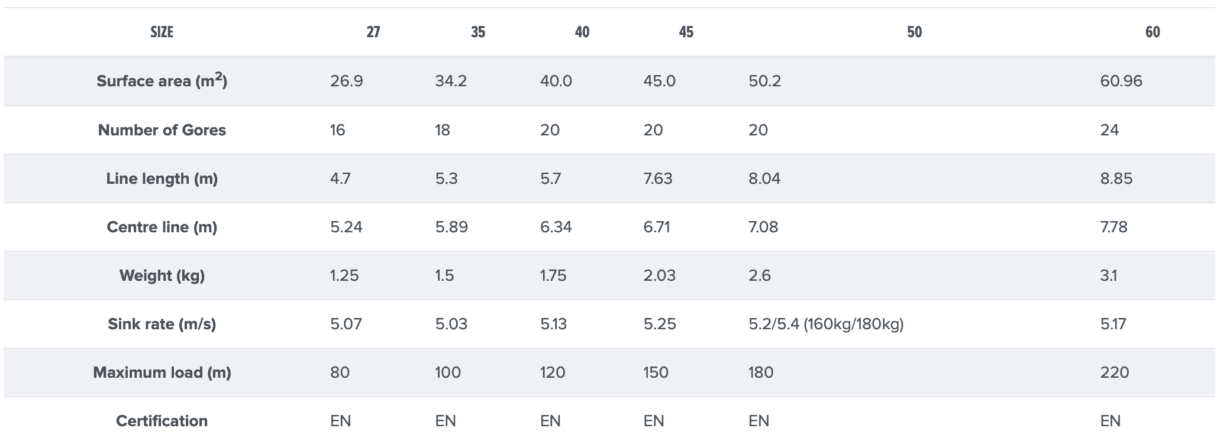
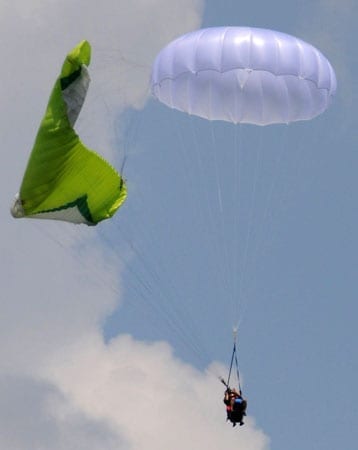
Even Better Reserve Chute:

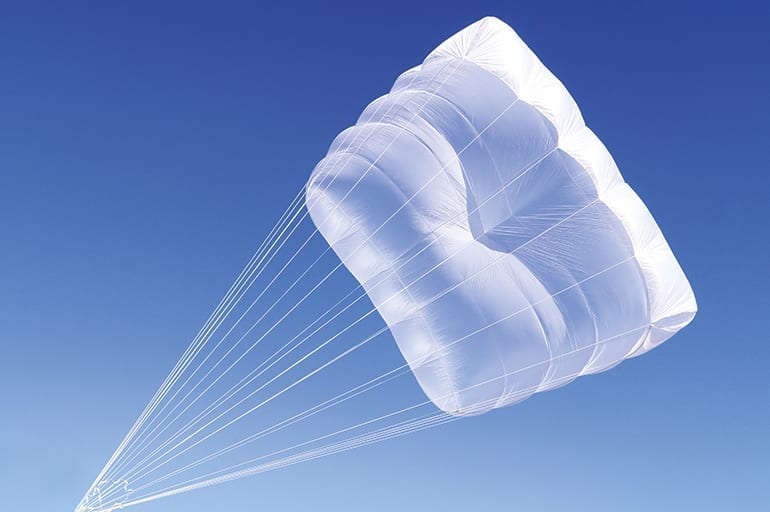
Gin Yeti Cross
The Yeti Cross is Gin's offering in the newer "square" type reserves which offer better stability (less oscillations) during descent. It also boasts a lower sink rate than it's round-reserve brethren, and claims better opening characteristics by design.



Niviuk Octagon 2
Niviuk's advanced "octagon" design is similar to square designs but with added trimming in the corners again to reduce oscillations and display better opening characteristics.
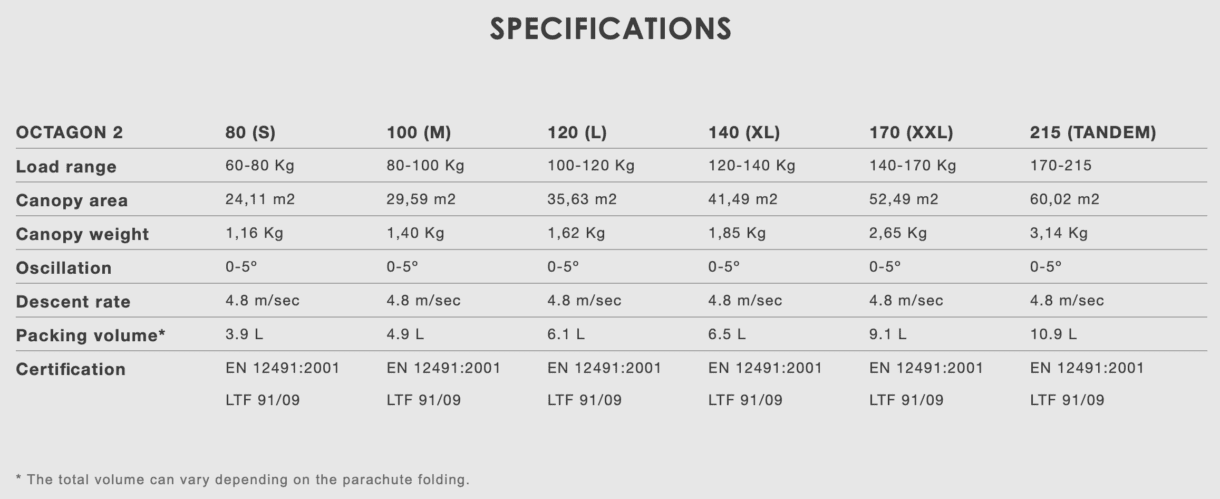


The Best Reserve:

High Adventure Beamer 3 & B3 Light
The Beamer 3 is the top-end "steerable" or "rogallo" reserve, which means the system uses left and right bridles and has toggles in order to steer your descent. If the reserve is thrown quickly, the toggles remain in the stowed position and the reserve descends straight down similar to a round or square design. If you are high enough and have time to deploy the toggles on the risers, this makes the reserve pickup some forward momentum and allows you to steer your trajectory slightly.
The reason we love this reserve is because it has a huge surface area, small pack volume, and a much better sink rate than anything else on the market. What we don't like about the reserve is the complexity of installation/repacking.
Steerable reserves require a bit of additional training to use safely. We really love the idea of keeping things as simple as possible, but for those who are willing to take on a bit more complexity, the advantage of a lower sink rate is very appealing.
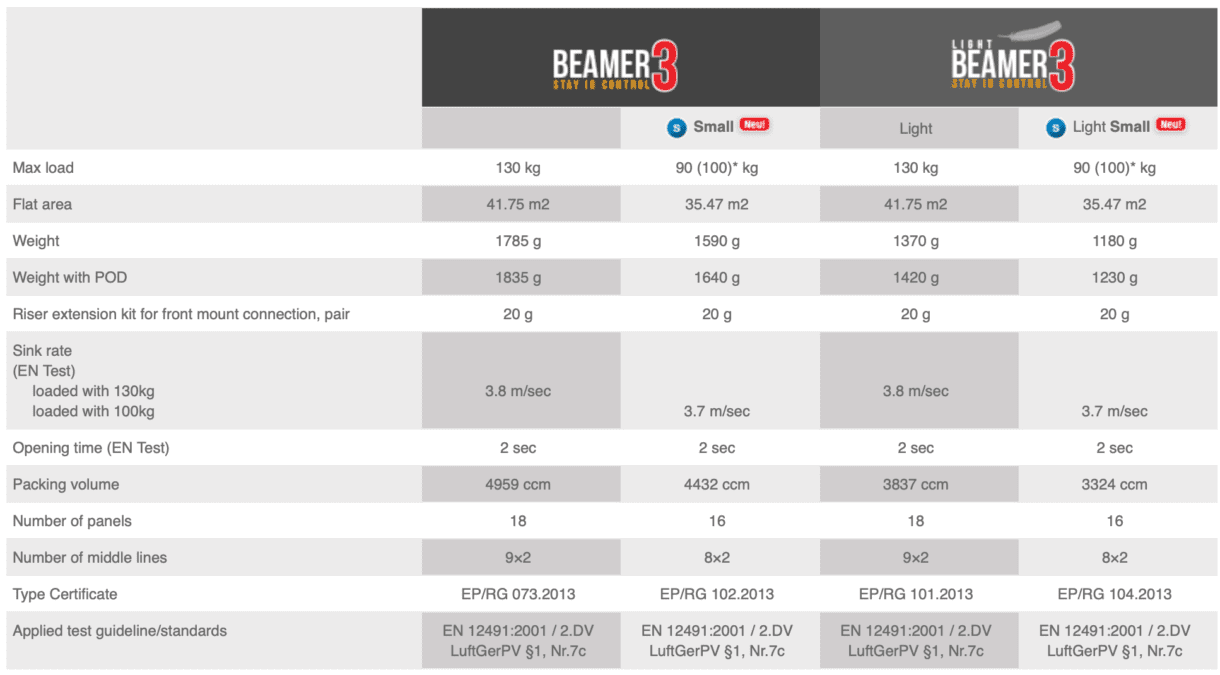
Which reserve is right for me?
Whatever reserve system you choose, from wherever you buy it, it's most important that you actually are always flying with a modern, safe reserve system designed for your weight. If you're having trouble deciding, please call us and let help guide you to the right choice for your particular setup, circumstances, and budget.
In your research, you will come across a particular breed of PPG pilot who, for no particularly good reason, is unwilling to use or suggest flying with a reserve.
If this logic appeals to you, consider the following appeals to common objections to flying with reserves:
But what if I don't do acro or fly in crazy weather?
Nope. Here's the thing - every experienced pilot out there has a story about how a completely benign flight turned into a turbulent nightmare where his/her only wish was to get to the ground in one piece. For us, it's better to have it and not need it, then to need it and not have it.
I fly too low to use a reserve.
Nope. We've seen successful reserve deployments (plural) under 75 feet. Aside from that, if you get smacked with rotor or a gust front, your first instinct should be to climb high enough to have a safety margin. There simply is no good argument against a reserve.
Won't a reserve complicate the learning process if I'm a newb?
Nope! We always outfit our training motors with reserves, and students do not fly without them, ever. Minimal training is required before flying with a reserve, and it can be conducted in less than 5 minutes.
This sport is expensive enough, I don't want to spend another $500-$1500 just to get in the air
No, no, three times no. This is a dangerous sport, and all the training and caution and judgement in the world will not save you when the exceptionally bad and unexpected happens. It's a second chance, you are worth it, and it must absolutely be factored into the cost of a safe start to paramotoring.
We would much rather see pilots save for another season and get the right equipment than rush into the sport with a duct-tape flying setup.
